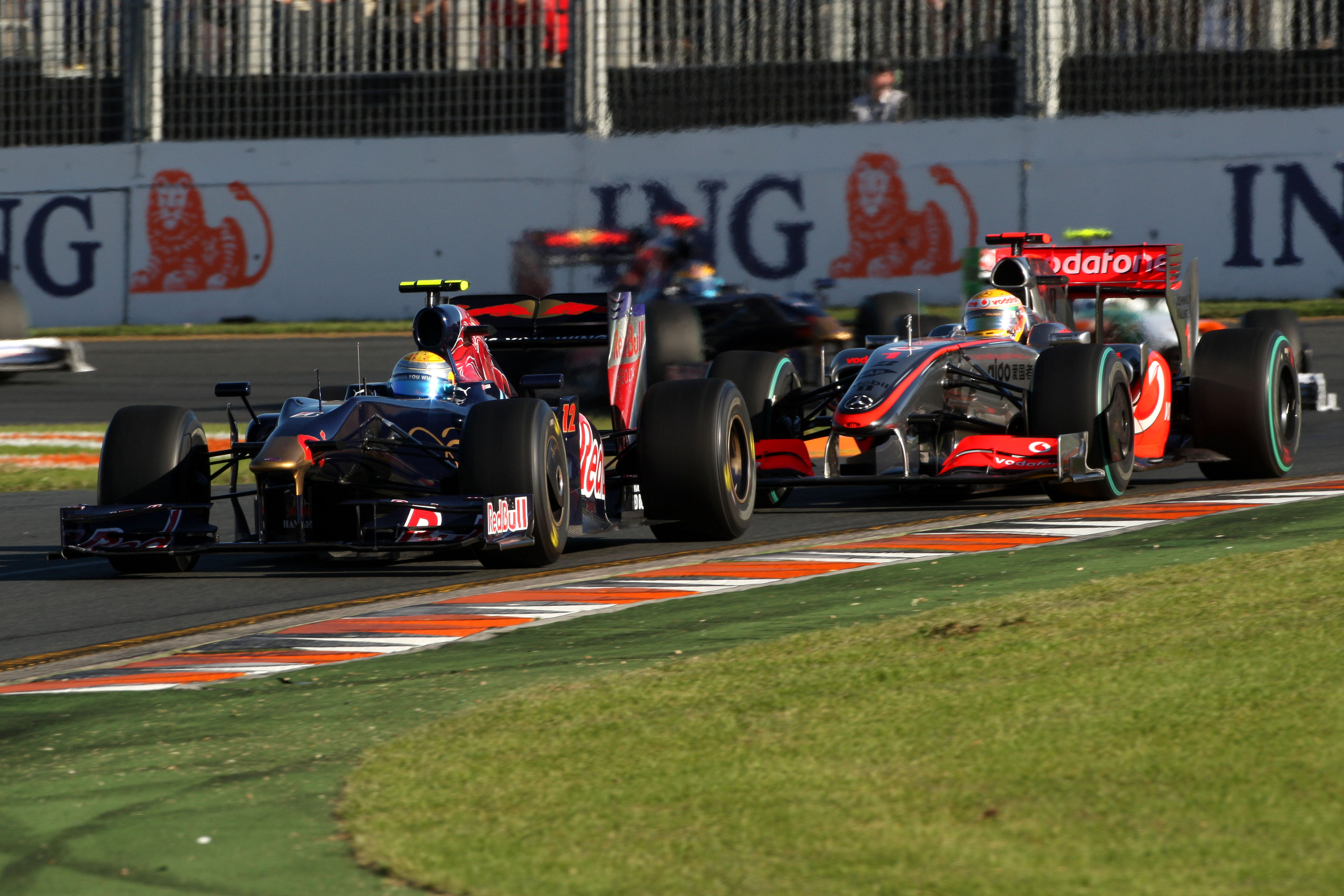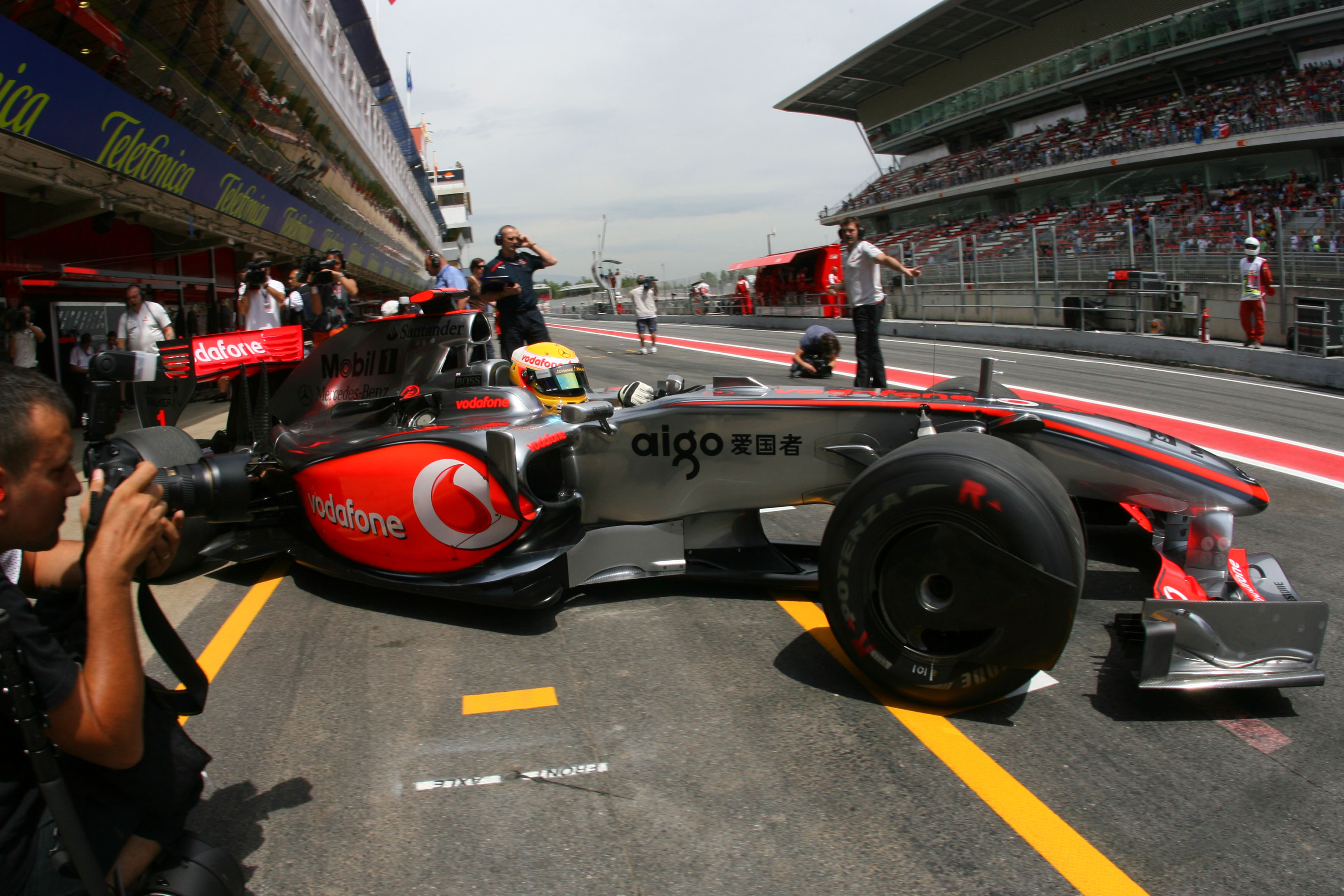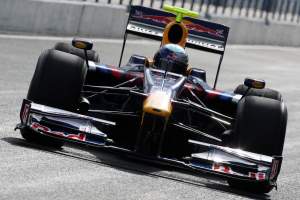Up Next

“There are people that watch and say I’ve never had a bad car, and I can assure you that I have,” says Lewis Hamilton.
“2009’s car was very, very far off, the worst car that I’ve had. This car currently is not far off that experience.”
Hamilton’s comparison of the McLaren MP4-24 he raced for the first half of 2009 with the Mercedes W13 is, if anything, an insult to his 2022 car given how uncompetitive the first half of his season was 13 years ago.
The troubles of that McLaren are often forgotten given the team’s dramatic recovery, with Hamilton winning in Hungary and Singapore that year, losing certain victory in Abu Dhabi to a brake problem and picking up four pole positions in the last seven races.
It finished the season well, but it was not a remotely competitive car for most of the first half of the season – something a glance at the championship standings doesn’t reveal.
In 2008, Hamilton won his first world championship, with McLaren missing out on the constructors’ crown to Ferrari. But the introduction of the ‘skinny’ aero regulations of 2009 derailed it.
“It was brand new era of car and I remember coming back In January to the team and the head of aerodynamics saying ‘we’ve already hit our target’,” says Hamilton.
“The new rules said we would have 50% less downforce in 2009, so they designed a car to have 50% less downforce. I remember in February them saying we’ve already hit our target, and I remember being like ‘that doesn’t sound right’. But I didn’t have the experience at the time.
“We got to the first test and realised others had almost as much downforce as the previous year and we were like ‘oh shoot, we’ve got work to regain that’. The ultimate unlocker of that was the double diffuser.”
Hamilton himself will admit to being not much of an historian, even when it comes to his own remarkable past in F1. So it’s important to put some skin on the bones of his summary, which is basically correct in character although less so in detail.

The 2009 regulations were the result of the work of the overtaking working group (OWG), formed in early 2007. Each team put around $50,000 into the pot to fund research with the objective of improving the ability of the cars to overtake.
The word ‘raceability’ wasn’t used in F1 circles then, but the objective was, at heart, identical to that of the 2022 regulations.
The OWG comprised Charlie Whiting, Ferrari’s Rory Byrne, Renault’s Pat Symonds and McLaren’s Paddy Lowe. They were the first to research the loss of performance when following another car properly, putting it at 20-30% of downforce in quicker corners.
The result was a familiar one – reduce downforce and therefore the turbulence generated, with the new regulations cutting the downforce in half. The cars were ill-proportioned, with a wide front wing, narrower, higher rear wing and reduced diffuser size – as well as the elimination of various flicks, vanes and aero details.

That’s where the 50% figure Hamilton cites comes from, although all involved knew that this wasn’t the real downforce target as re-optimisation would claw significant chunks of that back.
McLaren was optimistic about its car at the launch, and all the way up to the point when it realised it was not only not at the front, but in danger of being right at the back at the start of the season. The team reckoned its deficit was in the region of three seconds in testing trim.
One significant difference between the 2009 McLaren and 2022 Mercedes is that the former was at least working as expected. Despite some minor troubles in this area, it largely correlated well with the simulations and was producing close to the anticipated downforce. But Hamilton is right that the team’s downforce targets were way off.
Ross Brawn, then team principal at Honda, had warned rival teams in early 2008 that the downforce produced by the cars under the new rules was going to be significantly higher than anticipated. But most, including McLaren engineering director Paddy Lowe, justifiably felt Brawn and Honda were either lying as part of a political game, or deluded. After all, Honda in 2007-08 was woefully uncompetitive.
Hamilton is right that the double diffuser played a part in this. The key to it was not the architecture of the diffuser itself, but finding the necessary airflow to feed it. The regulations intended to stipulate that the floor was a single, impermeable part but Brawn, Williams and Toyota seized on a sharp semantic interpretation of the wording of the regs to get around this.

The rules stated that the transition between reference and step plane – the former 250mm either side of the reference plane and the later 50mm higher – had to be “solid, hard and impervious”. But the interpretation allowed multiple transitions with gaps between them through which the airflow could be supplied.
McLaren missed this, but so did most of the teams. Red Bull, for example, considered a double diffuser but rejected the idea because Adrian Newey, with some justification, felt the rules did not allow it. But after a politically-charged battle, the double diffuser was ruled legal.
Yet McLaren was also behind its single-diffuser rivals and another oversight had been pursing inwash endplates at a point when outwash was becoming di rigeur. It’s perhaps no coincidence that all three of the teams with representatives on the OWG were boxed into concepts that were very much to the intent of the regulations – but not the exact wording. It paid to tackle the rules without the baggage being on the OWG brought with it.
McLaren was in trouble, so took an enormously aggressive approach and threw parts at the cars in the early races. This wasn’t in the hope of transforming the MP4-24 into a winning car immediately, but simply achieving respectability. At this time, it was still unusual to bring new parts to every race, but McLaren couldn’t afford to wait and its changes yielded some useful gains.
Both McLaren drivers escaped Q1 in Australia, just – with Heikki Kovalainen 13th, 1.178s off the pace and Hamilton 15th. Hamilton’s five-place gearbox penalty meant he was destined to start at the back, with Kovalainen 14th and slowest in Q2 – within a second of the pace.
This constituted something of a save for McLaren and Hamilton came through to finish third on the road. He was later disqualified for the controversy over lying to the stewards about the circumstance in which Toyota driver Jarno Trulli had been let past.

In Malaysia (above), Hamilton was 13th in qualifying, 1.121s down, and finished seventh. In China, Hamilton qualified ninth, 2.411s off, with Kovalainen finishing fifth ahead of his team-mate in the race.
By the fourth race of the season in Bahrain, Hamilton qualified fifth, 0.765s down, and finishing fourth – even passing Jenson Button, then during the early-season dominance that would yield the championship early on, thanks to the kick of KERS at the start. Inevitably, he didn’t stay there for long.
But that early trajectory misrepresented the speed of McLaren’s recovery. Bahrain favoured the strengths of the car, which were slow corners having solved some of the early mechanical problems that led to the car three-wheeling at times during testing thanks to how stiff it was running.

Weight was also a concern. This was the first year of KERS and the Mercedes system was, unlike some of its rivals’, ready to go. But this did carry a weight disadvantage and even though McLaren did soon get down to the minimum weight, it was a while before it could run the ballast needed to fine-tune the weight distribution.
That’s part of the reason why simply bolting on its version of the double diffuser on the car for race five in Spain (above) didn’t transform the McLaren. The car was at its best on slower tracks, but high-speed, aero-dependent circuits like Barcelona showed up its weaknesses. Kovalainen was eliminated in Q1 with Hamilton managing only 14th on the grid and ninth in the race.
In Monaco, the car was stronger with Kovalainen qualifying seventh after Hamilton shunted at Mirabeau in Q1. Neither driver scored, with Kovalainen crashing at Swimming Pool and Hamilton 12th.

In Turkey, it was a struggle to escape Q1 and Hamilton failed to do so, with Kovalainen 14th and both cars finishing outside the points.
The tweaks were still coming, but McLaren was still fiddling around the edges of its fundamental aero limitation. Then came the nadir at Silverstone.
Kovalainen scraped into Q1 but the pace deficit of 1.580% from the front was the biggest of McLaren’s season. Again, there were no points but Hamilton did get the crowd on its feet when he passed Fernando Alonso, now driving for fellow struggler Renault – for 16th place.
McLaren had 15.5 points and was sixth in the constructors’ championship. The season seemed to be going from bad to worse.

Then Hamilton set the fastest time of the weekend and qualified fifth at the Nurburgring – finishing 18th after suffering a puncture at the start after contact with Mark Webber’s Red Bull – followed two weeks later by winning at the Hungaroring from fourth on the grid – taking the first victory in grand prix racing for a car with a hybrid element. So what changed?
Although both the Nurburgring and the Hungaroring were better suited to the slower-corner strengths of the car, the performance of the McLaren was significantly stronger. That was thanks to the introduction of a new front wing, floor, sidepods with modified radiator inlet and outlets, engine cover and a wider diffuser.
This was all about improving the airflow to the rear of the car, with the switch to outwash front wing endplates essential and the reduction in the size of the radiator inlets, at the expense of expanded outlets, and other changes improving the airflow to the rear of the car.
This was another area where KERS had caused some problems given the packaging demands, with the batteries housed below the radiators in the sidepods. McLaren had completed its recovery in double quick time and really was in business.
In Hungary, KERS also proved beyond question its value as it played a key role in Hamilton’s crucial pass on Webber. Once the initial weight and packaging disadvantages were resolved, it was a valuable weapon.
Hamilton no longer had a bad car. In addition to the two wins, he picked up a further three podium finishes across the final eight races of the season to climb to fourth in the world championship.
But that first half of the year, scrapping in a car that was often Q1 elimination fodder, looms large in his memory as the toughest he’s had it in F1.








